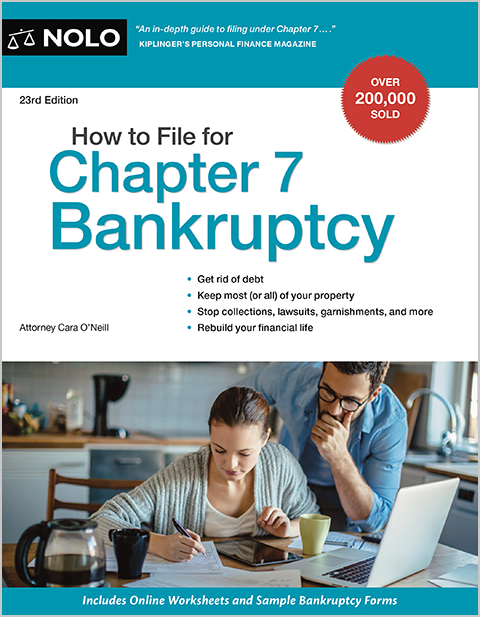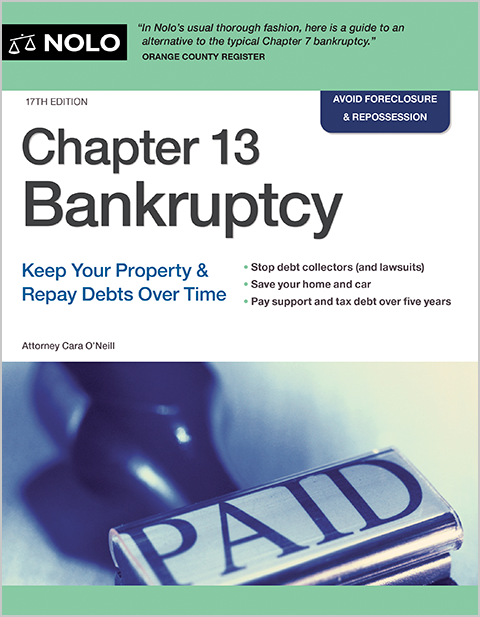The bankruptcy trustee can undo certain financial transactions that occurred before your bankruptcy filing.
The Chapter 7 bankruptcy trustee, the official assigned to administer the case, has certain "strong-arm" or avoiding powers that allow the trustee to reach back and undo certain transactions before your Chapter 7 bankruptcy filing. Among these are "avoidable preferences" or payments that unfairly favor one creditor over others.
Read on to learn how to recognize avoidable preferences, and the bankruptcy trustee's process to undo those transactions.
- What Are Preference Payments in Bankruptcy?
- What Is the "Look Back" or Preference Period in Bankruptcy?
- You'll Report Your Preferential Payments in Your Bankruptcy Paperwork
- Common Bankruptcy Preferential Payments: Insider Payments
- What Happens If I Make an Insider Preference Payment?
- How Does the Bankruptcy Trustee Undo Preferential Transfers in Bankruptcy?
- Need More Bankruptcy Help?
What Are Preference Payments in Bankruptcy?
An avoidable preference payment involves a payment made before filing for bankruptcy that prefers one creditor over others similarly situated. Preference payment rules ensure all creditors have an equal chance to get paid instead of one creditor getting all or a disproportionate share of a bankrupt debtor's assets.
Almost any transaction has the potential of being a preference payment. The transaction can be voluntary or involuntary. A preferential payment is voluntary if you take steps to pay a particular creditor. A creditor garnishing your bank account could be an example of an involuntary preference payment.
What Is the "Look Back" or Preference Period in Bankruptcy?
The look-back period, or time the trustee can unwind these transfers, is ninety days for general creditors and one year for insiders. Insiders are relatives or someone with a close or influential relationship with you (see more below).
The bankruptcy law sets minimum amounts to avoid preferential transfers. The amounts change periodically, and you'll find the figures for consumer and "business" bankruptcy cases in the official "SOFA" form discussed in detail below.
You'll Report Your Preferential Payments in Your Bankruptcy Paperwork
When you complete Your Statement of Financial Affairs for Individuals Filing for Bankruptcy (sometimes called "SOFA"), you'll disclose whether you've paid on a debt owed to an insider or paid an insider's debt during the year before you filed your bankruptcy case. In bankruptcy, an insider is someone close to you, such as a family member, a business partner, or a relative of a business partner.
What's the purpose of SOFA? SOFA is one of the forms that the bankruptcy trustee—the official tasked with managing your case—will review for fraud and unfair practices. The trustee has the power to unwind transactions and recover funds for the benefit of creditors. Anyone who received money or property that should have remained in the bankruptcy estate will have to return it. You'll also disclose debt payments made to creditors over the established limits on this form.
Common Bankruptcy Preferential Payments: Insider Payments
Family members and business associates have avoided creditors by transferring assets to each other for as long as courts have recorded case law—and it's still a common occurrence. It's considered unfair to give insiders payment priority over your other creditors, and creditors must receive payment according to the priority ranking system outlined in bankruptcy law. As a result, you'll have to disclose such transactions when you complete your paperwork.
What Happens If I Make an Insider Preference Payment?
You can expect the trustee to take steps to get the funds or property back if it has occurred. If you hide a transaction, however, and the trustee later discovers it, the trustee will not only unwind it, but you'll be subject to fines and penalties of up to $250,000, 20 years in prison, or both. If you believe you'll have to report an insider transaction on your statement, it's best to consult a bankruptcy attorney before moving forward.
The rationale behind these avoiding powers is that all creditors similarly situated should be treated the same. Once the trustee collects all of your money or property and liquidates (converts to cash) the property, the trustee can redistribute the funds equally among similarly situated creditors and per the disbursement schedule set out in the bankruptcy law.
To learn more about avoidable preferences, see Payments Made to Creditors Before Bankruptcy: Can the Trustee Get the Money Back?
How Does the Bankruptcy Trustee Undo Preferential Transfers in Bankruptcy?
While the trustee is granted these strong-arm powers under bankruptcy law, the transfers' recovery is not automatic. The trustee must demand the money or property return, but the creditor has no legal obligation to return the funds until the trustee obtains a judgment from the court. A creditor can use this period to investigate and work out a settlement for less than the total amount with the trustee. Here's how this works.
Before the 341 Meeting: Review of Schedules, Statements, and Preliminary Documents
In the first step of the process, the trustee will look for any avoidable transfers by reviewing your bankruptcy schedules and statements and any bankruptcy documents you must provide before the 341 meeting of creditors.
At the Creditors Meeting: The Trustee's Initial Inquiry and Testimony
Depending on the circumstances, the trustee might ask questions about transactions occurring before you file for bankruptcy at the 341 (meeting. Because multiple bankruptcy filers usually attend the creditors' meeting, the trustee will have only a few minutes to conduct the initial inquiry before moving to the next case. So if the trustee suspects transfers, you can expect the trustee to continue the meeting so the trustee can spend more time on the case. Also, the trustee might request that you provide additional documentation to the trustee's office.
To learn more, see The Meeting of Creditors in Chapter 7 Bankruptcy.
After the Creditors Meeting: Trustee Follow-up and Demand Letters
Even if the trustee doesn't request additional documentation at the creditor's meeting, a trustee who suspects transfers will likely request other documentation or information later. The trustee will probably phone your lawyer, but the trustee could send a letter or take more extreme measures.
When a trustee suspects a serious problem exists, the trustee (or someone else involved in the matter) can set a type of deposition called a 2004 examination to obtain more formal testimony and document production. The trustee is looking for the following:
- transfer documentation
- evidence that the person receiving the payment received more than they would in bankruptcy, and
- information on possible defenses.
The Trustee's Adversary Proceeding or "Clawback Suits"
A trustee's action to recover a transfer is often called a "clawback" suit. It starts when the trustee files an "adversary proceeding" or lawsuit after determining the following:
- an avoidable preferential transfer took place
- there are insufficient defenses to the recovery of the transfer, and
- the recipient refused to return the transferred money or property.
The person sued can respond to the trustee's action and present defenses explaining why the transfer wasn't preferential. For example, these defenses might include:
- the creditor loaned you more money after receiving the transfer ("new value" received)
- you exchanged things of equal value, or
- the transfer was an ordinary business transaction.
After considering the evidence, the court will decide the outcome. A person who receives a transfer must return it but they can file a claim for the transfer amount in the bankruptcy proceeding.
For more information, see Adversary Proceedings in Bankruptcy.
Need More Bankruptcy Help?
Did you know Nolo has made the law easy for over fifty years? It's true—and we want to ensure you find what you need. Below you'll find more articles explaining how bankruptcy works. And don't forget that our bankruptcy homepage is the best place to start if you have other questions!
|
Our Editor's Picks for You |
|
|
More Like This |
|
|
What to Consider Before Filing Bankruptcy |
What Not to Do Before Bankruptcy |
|
Helpful Bankruptcy Sites |
We wholeheartedly encourage research and learning, but online articles can't address all bankruptcy issues or the facts of your case. The best way to protect your assets in bankruptcy is by hiring a local bankruptcy lawyer.
- What Are Preference Payments in Bankruptcy?
- What Is the “Look Back” or Preference Period in Bankruptcy?
- You'll Report Your Preferential Payments in Your Bankruptcy Paperwork
- Common Bankruptcy Preferential Payments: Insider Payments
- What Happens If I Make an Insider Preference Payment?
- How Does the Bankruptcy Trustee Undo Preferential Transfers in Bankruptcy?
- Need More Bankruptcy Help?

